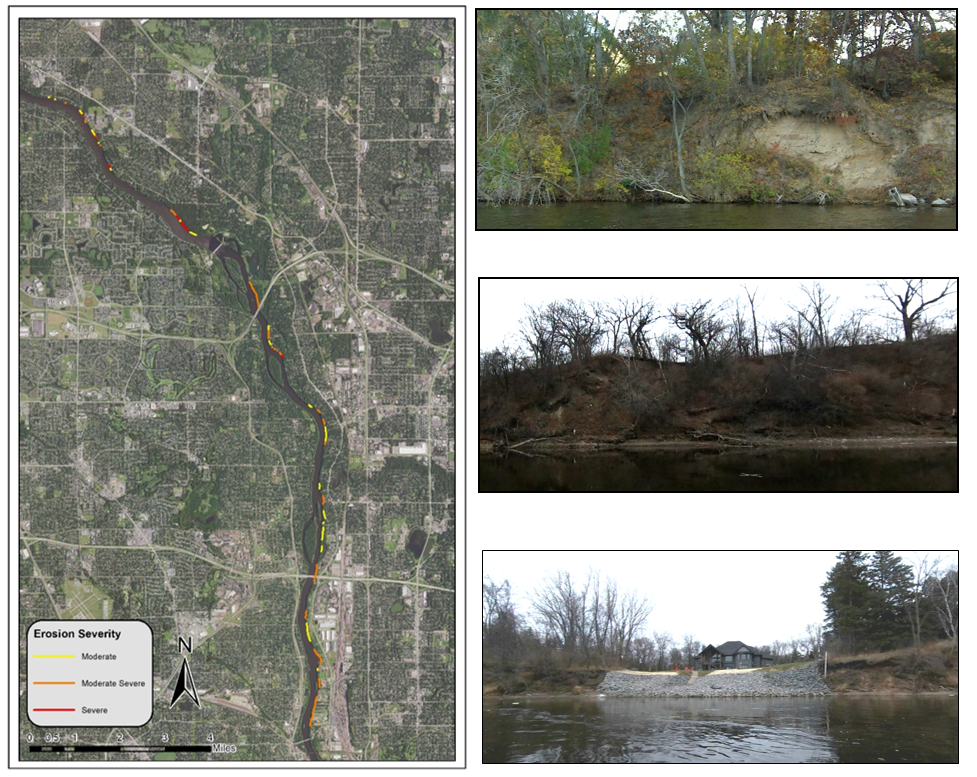Mississippi River Erosion Inventory Highlights Bank Stabilization Needs, Gives Project Opportunities
The Mississippi River fulfills the water resource needs of millions of people and provides hydrological and habitat benefits of national significance. It is a powerful waterbody that has shaped the U.S. landscape for millions of years. Erosion is a naturally occurring process in flowing water systems such as the Mississippi River, but it can become exacerbated with increases in extreme weather events and in developed landscapes where stormwater drainage networks contribute to increased surface water volumes. Bank erosion can threaten adjacent urban and agricultural infrastructure and contributes to sediment and nutrient loading that impacts local water quality. Thus, riverbank stabilization practices that minimize erosion serve as mechanisms to combat these environmental challenges.
Using 360° photos captured from a watercraft on the Mississippi River, ACD identified the location and severity of eroded banks spanning from Coon Rapids to Fridley. Altogether, nearly 50 separate stretches of moderately to severely eroded banks were identified, collectively contributing to an estimated 8,517 tons of sediment inputs to the river each year. These stretches were present along both private and public properties ranging from dense residential areas to expansive county parks. A recommended stabilization approach and corresponding project cost estimate was applied to each eroded bank, thus providing cost: benefit scenarios for each potential stabilization project and facilitating the strategic pursuit of those which maximize environmental benefits.
These findings are detailed in a comprehensive report located here, which also includes further details on ACD's erosion inventory methodology, profile pages for each potential stabilization project, and information on a variety of riverbank stewardship and stabilization approaches. To view examples of completed stabilization projects identified through previous erosion inventories, view our interactive projects map here. For more information please contact Breanna Keith,
When you subscribe to the blog, we will send you an e-mail when there are new updates on the site so you wouldn't miss them.
